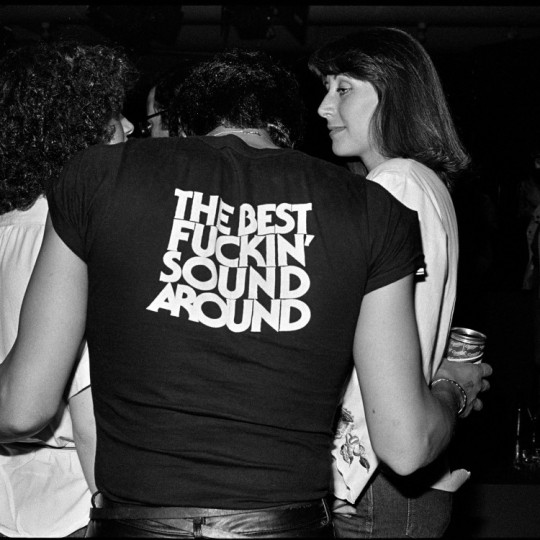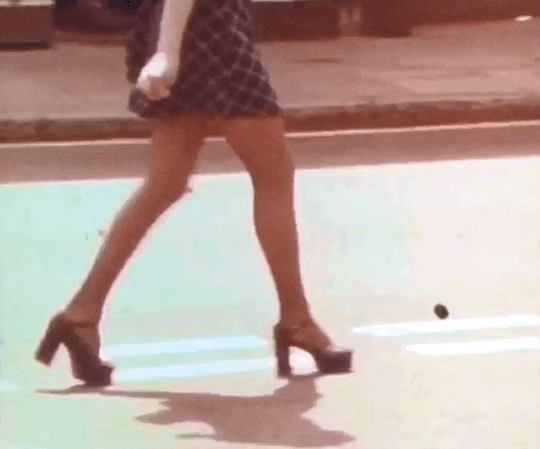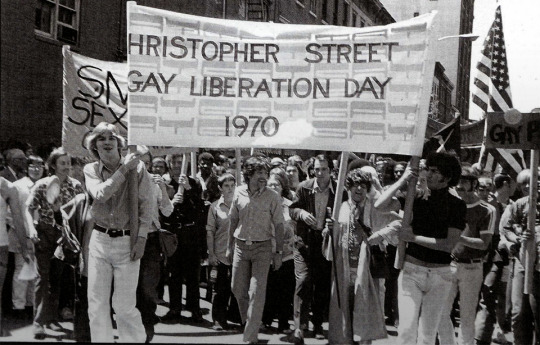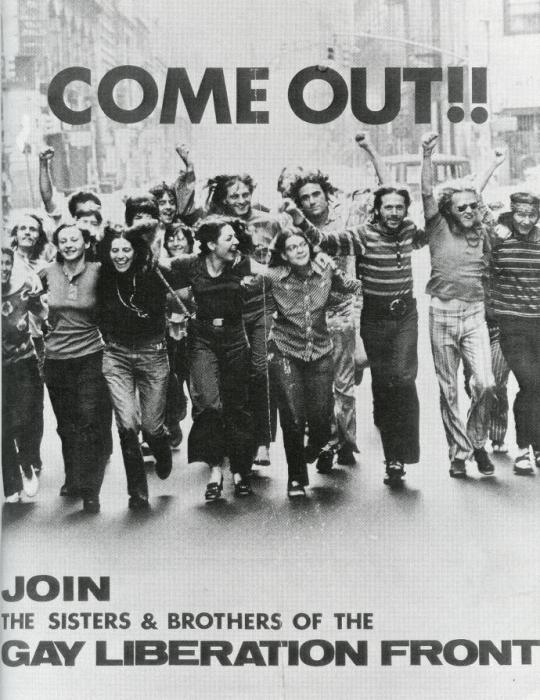Text
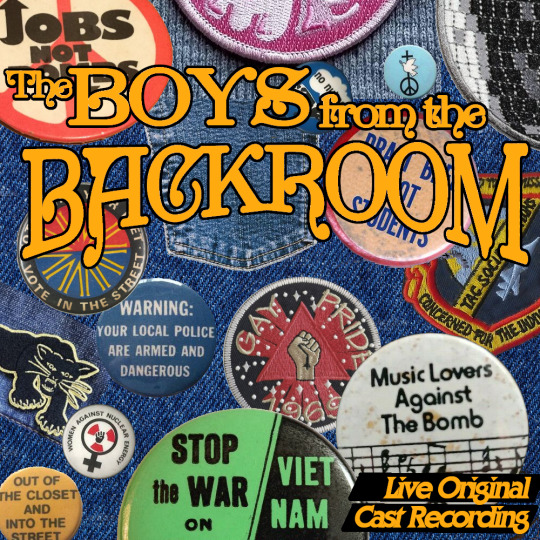
In a parallel universe, the year is 1975 - and alongside youth-culture musicals like Godspell, Hair and Jesus Christ Superstar, a little-known cult-classic adaptation of Les Miserables is written featuring the greatest disco artists of the moment, on the cusp of fame. The show closed in the first week after running out of money, with performers going on strike due to unpaid wages. For years, rumours of the show were the things of disco and Hugo legend - until a surviving bootleg came to light, capturing the electrifying original cast. These lost tapes have now been remastered, and released for the first time online...
Get the Album
138 notes
·
View notes
Text
[“By looking at mainstream gay and queer left publications, Kunzel notes a transition from a politics of solidarity with imprisoned LGBTQ people in the 1970s (“We are all prisoners,” “We are all fugitives,” and “Free our sisters! Free ourselves!”) to a position of distance and disidentification beginning in the 1980s. Kunzel notes the ways that in the 1970s queer activists connected their experiences of personal and institutionalized racism and homophobia with the struggles of all prisoners: “Because we understand that the system that has created and maintained prisons as method of social control is the same system that oppresses [those of] us on the outside.” This liberatory queer politic was not concerned with giving queer prisoners a “helping hand,” but rather sought to build “a new kind of community” that could simultaneously challenge the racialized politics of criminality, social control, bodily regulation, and the management of queer desire.
In the 1980s, Kunzel marks a decline in prison pen-pal projects and a shift from a revolutionary politics to a liberal politics bent on social inclusion, rights, and gay marriage. Many queer activists’ concerns shifted to “winnable battles,” in which queer prisoners were constructed as a “negative element” in the overall debate concerning “gay rights”; gay activists sought to build a movement with “as little fragmentation as possible.” Middle-class gay white men argued that “gay rights” should remain a legislative issue and that “legally sanctioned gay marriage should be a primary concern for all of us.” Kunzel charts the ways that the forced forgetting of queer and trans prisoners was central to the coalescing of “new gay norms,” “gay respectability,” and homonormativity. This disciplining of the queer left was a racialized project that coalesced around shoring up the privileges afforded by whiteness, gender normativity, and capital. It was a movement to proliferate the life-enhancing norms of white supremacy and neoliberalism at the expense of so many lives, in addition to a movement and politics bent on the liberation of all.
The purging of imprisoned queer and trans people from “the community” has, in part, acted as the condition of possibility for the privileges and power afforded to those not ensnared in the nexus of power produced by neoliberalism, heteropatriarchy, white supremacy, and regimes of incarceration. The forgotten, the expunged, and the eradicated are intimately constitutive of what we remember, how we know, and where we are. As some seek safety and security under racially gendered state and corporate power, what quotidian deaths will make such shelter possible? What norms will proliferate? What bodies and lives will be constructed as disposable or even unimaginable by a movement for inclusion? Whose doors will continue to be kicked down? Who will continue to be taken at night, or under the light of day?”]
Stephen Dillon, from The Only Freedom I Can See: Imprisoned Queer Writing and the Politics of the Unimaginable, from Captive Genders: Trans Embodiment and the Prison Industrial Complex, edited by Eric A. Stanley and Nat Smith, AK Press, 2011
213 notes
·
View notes
Text

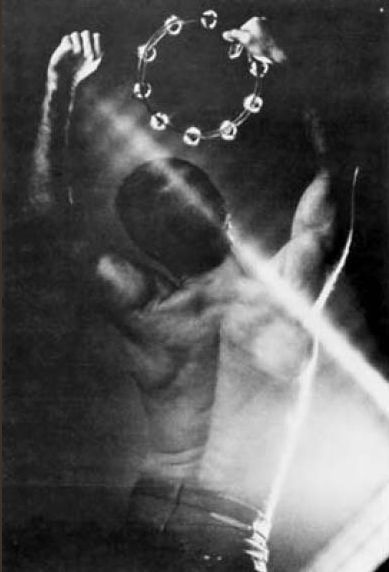

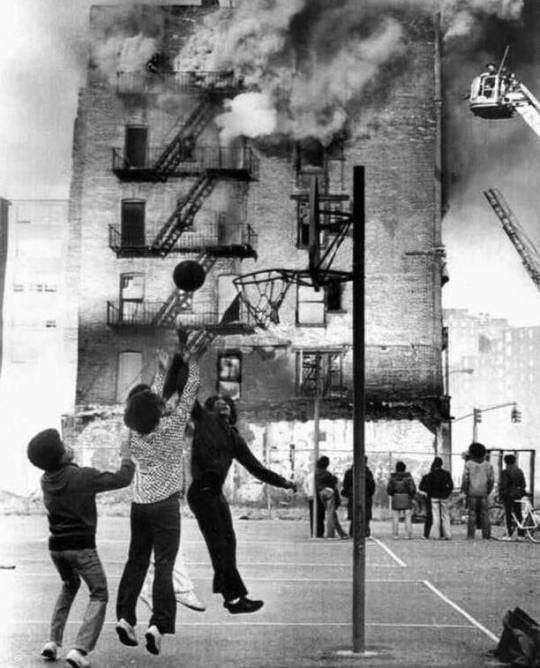
Images Kenneth Siegel; Michael Fesco; unknown and unknown
[Image ID
#1 A young man of colour with dark eyes, wearing a hat and a white vest, looks intensely into the distance. Behind him is an apartment block. His arm has old scars on it.
#2 black and white photo of a man's back. He is dancing, wearing jeans and no top. His arms are raised above his head and he is holding a tamborine. There is a dramatic beam of light and heavy shadows.
#3 black and white photo of a party. The ceiling has a disco ball, floating balloons, and streamers. People of different ethnicities are dancing, some in couples and some solo.
#4 black and white photo. in the foreground, four black children (maybe age 9 to 12) are playing basketball, jumping for the hoop with the ball above their heads. Behind them, an apartment block is on fire. The apartment has external metal fire escapes and balconys and smoke is pouring from the windows. A line of people are watching the fire. There is a fire-crane
End ID]
2 notes
·
View notes
Text
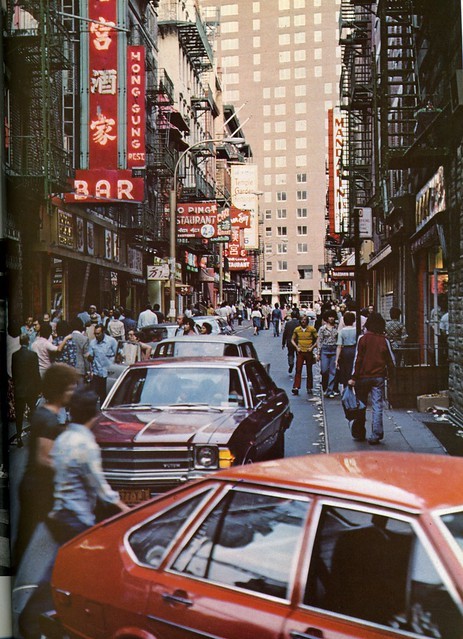
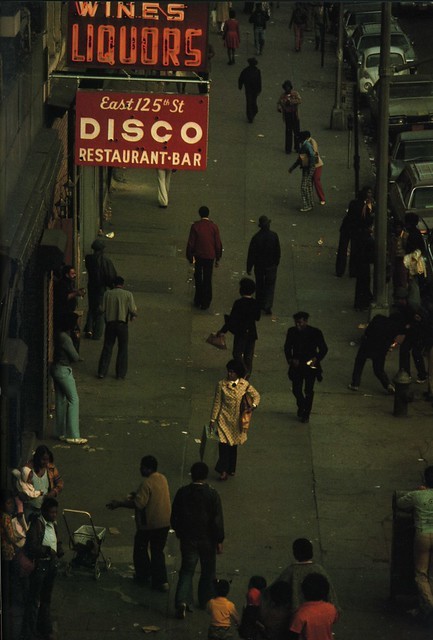

The pictures were taken from the books “The Pavements of New York” by Nicolai Canetti which was published in 1976 and “New York” a 1977 publication that featured photography by Bernard Hermann.
[Image ID
#1 a color photograph of a busy city street, the end of the street is blocked by an apartment and the buildings all have external fire escape ladders. Some have advertising and shop signs; one, with large Chinese characters on a red background, reads HONG GUNG BAR. Some people are blurry moving. There is a red car turning past the camera, and people cutting across the street.
#2 a dark colour photograph of an urban pavement. Silhouettes of many people, with dark hair. Some street signs read "Wines Liquors" and, underneath, "East 125th St - DISCO - Restaurant Bar"
#3 a color photograph of an urban street market. Photo dominated by a clothes stall, with folded clothes in packets and jackets on hangers. In the foreground is a young black man with a tailored grey houndstooth velvet flares and high-cut jacket. Behind him the market is busy with other shoppers
End ID]
4 notes
·
View notes
Text

[Image ID
a photograph of nine badges. Each one reads "Disco doesn't suck! You do!" in a chunky art nouveau 1970s font. Each badge has a different, bold background colour
End ID]
1 note
·
View note
Text
youtube
Resistance to American wars in Vietnam and Cambodia were a major feature of student radicalism in the period. Young men were at risk of being drafted into the army, and this anti-war documentary interviews those who fled abroad to avoid enlistment.
(reportedly, Courferyac is in-part based on Hugo's friend Alexandre Dumas - who went to prison for refusing to serve in the National Guard, and who also faced barriers to higher education due to being mixed race. For the time being, then, this is forming part of my headcanon for Courferyac in this setting - if you were at college, you could defer your draft, meaning men of colour, working class men, and other groups excluded from college were at higher risk of serving. It's also a key point for Feully: who represents the importance of international solidarity.)
0 notes
Text
youtube
Modern talking heads MTV documentary about New York musical subcultures in 1977. Mostly not about disco - exploring also hip hop and punk - but a great sense of the era and place, recommended as a 101 introduction if you only want to watch/read one thing.
0 notes
Text
youtube
Vintage documentary, with good politics, about arson and living conditions in the South Bronx. Contains upsetting verbal description of violence against animals, and documentary footage of adults and families living in unacceptable housing.
Urban poverty and abandonment skyrocketed in the period. Disco cultures grew in unwanted post-industrial buildings, with names like The Warehouse, The Garage, The Tunnel, The Sanctuary giving clues to their former uses. Radical cultures grew in these semi-squatted and extremely affordable, pre-gentrification spaces.
One cause of a desolate landscape was landlords burning down buildings they owned to claim insurance money. This documentary explores this - and other reasons behind astonishing arson rates in the setting (bored kids; domestic violence; getting up the welfare list), as well as showing the kind of landscape, people impacted, other living condition problems and tensions caused in abandoned areas of the city.
Things that jumped out to me: Lesgle as a person whose building has burnt down more frequently than anybody they know; from 46 minutes in, a local community group taking the lead on restoring a building without permission, as ideas for the sort of ground work the Amis might have been involved in; and just heartbreaking interviews with older women living in the most horrifying living conditions, as vision of what "miserable" means in the setting.
0 notes
Text

i'd like to dedicate this song to my partner, kim kitsuragi
1K notes
·
View notes
Photo
[Image ID:
A black and white photo. Four young people pose for the camera. Two are smiling, two look more serious. They are leaning on pinball machines (one reads Playboy, the other Star Trek). They are all wearing roller skates, and retro fashions like: a glitter body-suit, high socks with stars on, a tight striped sleeveless t-shirt with tight shorts, a glittery crop top, a hairband.
End ID]

Roller disco, 1970s.
104 notes
·
View notes
Text

mythic party at the Loft
[Image ID:
A black and white photo. In a small room, many people are dancing at a party, with hands outreached to waft balloons. The photo is filled with balloons, floating in the air above them. There is also a disco ball. No faces or individuals can be picked out.
End ID]
0 notes
Text

Meeting of SoHo Artists Association Planning Committee, discussing survey maps prior to the legalizations of loft living. | SoHo Artists Association Records, 1968-1978
[Image ID:
A black and white fly-on-the-wall style photo. A group of twelve people sit on different styles and heights of chair, in a circle. The are listening to one of the seated people speak, who is moving their hands and holding a piece of paper. There is a board set up with papers pinned to it. They are in a warehouse, loft, or some other industrial feeling environment, with blank brick walls and a wooden floor, lit by a single lightbulb that casts heavy shadows
End ID]
0 notes
Text

Photo by Lionel Martinez
[Image ID:
An artistic colour photograph. A street corner at night time, lit by shop signs. The shop signs reflect in the rain and wet tarmac to make the whole picture colourful. One reads COFFEE SHOP in orange, and another in white advertises PIZZA. There is a car, a silhouette of two people with an umbrella, lamp-posts, and steam coming from the sidewalks. The Coffee Shop is bright inside.
End ID]
0 notes




